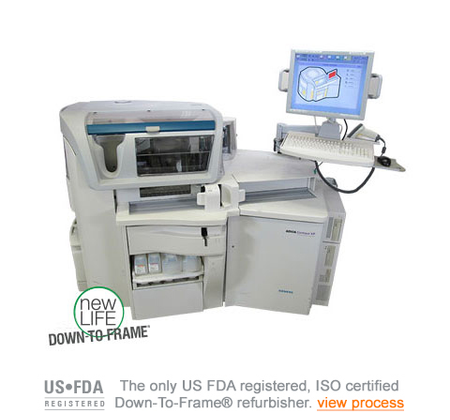
New York City, known for its bustling financial district and high cost of living, presents unique challenges and opportunities when it comes to managing personal finances. This article delves into the key aspects of financial health in NYC, focusing on budgeting, saving, and investing strategies. We will explore practical tips, analyze financial trends, and compare various financial approaches to help residents of the Big Apple secure their financial future.
The Importance of Budgeting in NYC

Budgeting is the cornerstone of financial health, particularly in a city as expensive as New York. With the cost of living significantly higher than the national average, creating and adhering to a budget is essential for managing expenses and ensuring financial stability.
Key Components of a Budget
- Income Tracking: Understanding all sources of income, including salary, freelance work, and investments, is the first step in budgeting.
- Expense Categorization: Categorizing expenses into fixed (rent, utilities) and variable (entertainment, dining out) helps identify areas where spending can be adjusted.
- Savings Allocation: Setting aside a portion of income for savings ensures long-term financial health and prepares for emergencies.
- Debt Management: Including debt repayment in the budget prevents the accumulation of high-interest liabilities.
Budgeting Tools and Apps
Several digital tools can assist New Yorkers in managing their budgets:
- Mint: Tracks spending, creates budgets, and provides financial insights.
- YNAB (You Need A Budget): Encourages proactive budgeting by assigning every dollar a job.
- PocketGuard: Helps users stay within budget by showing how much disposable income they have after accounting for bills and necessities.
Saving Strategies for NYC Residents
Saving money in a high-cost city like NYC requires discipline and smart strategies. Here are some effective ways to save:
Emergency Fund
An emergency fund is crucial for unexpected expenses such as medical bills, car repairs, or job loss. Financial experts recommend saving at least three to six months’ worth of living expenses.
High-Yield Savings Accounts
High-yield savings accounts offer better interest rates than traditional savings accounts, helping money grow faster. Online banks often provide higher yields compared to brick-and-mortar banks.
Automated Savings Plans
Automating savings can ensure consistent contributions. Setting up automatic transfers from checking to savings accounts can make saving a seamless part of financial management.
Cost-Cutting Measures
- Housing: Consider roommates, downsizing, or moving to a less expensive neighborhood.
- Transportation: Utilize public transportation, bike, or walk instead of owning a car.
- Food: Cook at home more often and take advantage of grocery store sales and discounts.
Investing Strategies in NYC
Investing is essential for building wealth over the long term. NYC residents have access to a wide range of investment opportunities, but navigating these can be complex.
Stock Market Investments
Investing in the stock market can yield substantial returns. Consider these options:
- Individual Stocks: Direct investment in companies.
- Exchange-Traded Funds (ETFs): Diversified portfolios of stocks that track specific indices.
- Mutual Funds: Managed funds that pool money from multiple investors to buy a diversified portfolio of stocks and bonds.
Real Estate Investments
Real estate in NYC can be a lucrative investment due to the city’s high property values and demand for rental units. Options include:
- Rental Properties: Purchasing residential or commercial properties to rent out.
- Real Estate Investment Trusts (REITs): Investing in real estate without owning physical properties.
Retirement Accounts
Tax-advantaged retirement accounts like 401(k)s and IRAs are essential for long-term financial security. Employers often match contributions to 401(k) plans, providing additional benefits.
Robo-Advisors
Robo-advisors use algorithms to manage investments, offering a low-cost and accessible way to invest. Examples include Betterment and Wealthfront.
Analysis of Financial Trends in NYC
Cost of Living
NYC’s cost of living is one of the highest in the country, driven by housing, transportation, and entertainment expenses. This necessitates careful financial planning and strategic budgeting.
Income Disparity
Income levels in NYC vary widely, with a significant gap between high earners and low-income residents. This disparity impacts saving and investment capabilities.
Financial Literacy
A higher level of financial literacy is essential for navigating NYC’s complex financial landscape. Workshops and educational resources can help residents make informed decisions.
Technological Integration
The integration of technology in personal finance, through apps and online platforms, has revolutionized budgeting, saving, and investing, making it more accessible and efficient.
Comparative Table of Financial Tools
| Tool | Purpose | Pros | Cons |
|---|---|---|---|
| Mint | Budgeting and expense tracking | Free, user-friendly, comprehensive reports | Ad-supported, privacy concerns |
| YNAB | Proactive budgeting | Encourages saving, detailed tracking | Subscription fee, learning curve |
| PocketGuard | Budget management | Simple interface, identifies disposable income | Limited customization |
| Betterment | Automated investing | Low fees, tax-efficient investing | Limited human advisor access |
| Wealthfront | Automated investing | Low fees, comprehensive financial planning | No human advisors for lower tiers |
Analysis Table of Financial Health Strategies
| Strategy | Benefit | Challenges | Recommendations |
|---|---|---|---|
| Budgeting | Provides financial clarity and control | Requires discipline and regular updates | Use digital tools for ease and accuracy |
| Emergency Fund | Prepares for unexpected expenses | Can be difficult to prioritize saving | Automate savings transfers |
| High-Yield Savings Accounts | Faster growth of savings | Interest rates can fluctuate | Research and choose reliable online banks |
| Stock Market Investments | Potential for high returns | Market volatility, requires knowledge | Diversify investments through ETFs or mutual funds |
| Real Estate Investments | Passive income, property value appreciation | High upfront costs, property management | Consider REITs for lower-cost entry |
| Retirement Accounts | Tax advantages, long-term growth | Penalties for early withdrawal | Maximize employer match contributions |
| Robo-Advisors | Low-cost, accessible investing | Limited customization, less personalized | Use as part of a diversified investment strategy |
Conclusion
Achieving financial health in NYC requires a multifaceted approach involving careful budgeting, disciplined saving, and strategic investing. By leveraging digital tools and staying informed about financial trends, NYC residents can navigate the challenges of high living costs and income disparity. Whether through setting up automated savings plans, investing in diverse portfolios, or utilizing technology for financial management, there are numerous strategies to ensure long-term financial stability and growth in the city that never sleeps.










